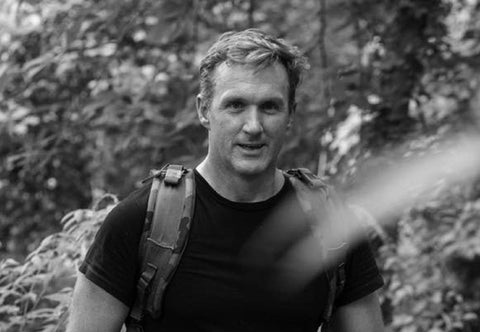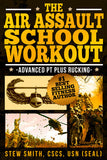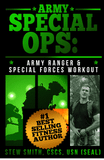Transforming from Athlete to Tactical Athlete:
The Core Principles of Tactical Fitness vs. Athletic Training
The term “tactical” often finds its way into discussions to set apart the extraordinary as “military grade” or the stylishly functional as “tactic-cool.” About 15 years ago, this term extended into a new realm—tactical fitness, which focuses on the physical preparation essential for military, law enforcement, and firefighting professions. The transformation from athlete to tactical athlete is based on many similarities but some profound differences. Tactical fitness becomes your secret weapon when your mission demands versatility and resilience across a spectrum of athletic elements and tactical skills.

I look at it this way. As someone who seeks methods for over 25 years (and counting) to coach people preparing for military, police, and fire fighter professions, that treating themselves as athletes is critical to being a capable sheep dog / public servant. One of the most essential rules for tactical athletes is treating oneself as an athlete, which is crucial for those preparing for roles as protectors and public servants. This mindset necessitates adopting the habits of an athlete—consistent training, proper nutrition, hydration, and recovery—to build a resilient and capable individual. You don’t have to be a world-class powerlifter or a triathlete, but you need a versatile combination of job-specific skills to perform efficiently without risking injury. In essence, your training should be as if the lives of your loved ones depended on it.
Similarities Between Tactical Fitness and Athletic Training
This requires tactical fitness to become “sports / job specific” or even better, “multi-phasic movement specific” grounded in a foundation of movements that are basic to all athletics. Movements that are multi-planar as well and based in strength such as squats, pushups, pullups, dips, overhead press, lunges, hip hinges, carry, crawl, run, swim, and load bearing (ruck / equipment carry). As with any sport, with these movements, you need to have a foundation of strength to build the other elements of fitness upon and specialize depending upon the sport / job in training. If you are coming from several years as a competing athlete, you may have a few of these strengths already, but there are typically equal and opposite weaknesses you must assess immediately.

The Differences
An easier way to break these movements up is to say, Push, Pull, Leg, Full-body, Core, Cardio. Then taking these movements and applying ALL the elements of fitness to them such as strength / power, speed / agility, endurance / muscle stamina, and flexibility / mobility. This is essentially Tactical Fitness. Of course, there are many sub-categories to these elements such as hand-eye coordination, grip strength, core strength, and varying methods and speed and distances of cardio endurance. But what differentiates tactical fitness from standard fitness / athletic training is that the tactical athlete HAS to be good at all of these elements of fitness. A swimmer does not need agility. A powerlifter does not need to run. A runner does not need upper body strength. And if you look at the best in the world in these sports, it shows. However, once again, depending upon the job of the tactical professional, varying degrees of ability in ALL of the elements will apply.
Tactical Fitness – Three Phases - To, Through, and After
Getting TO the Training - As with any athletic programming, you have to start somewhere. In the tactical fitness world, phase one requires an athlete to get TO the Training. To do this, you need to master a specific set of skills that are in a fitness test. Some are tougher than others. In the athletic world, a younger athlete will do well focusing on the similar basics of squats, pushups, pullups, lunges, and running / swimming to get in shape for more sport-specific skills. These exercises and tests vary from military branch of service, to each police and fire department across the world. Some similarities, but all typically have a different way to assess a candidate’s abilities. Training specifically for this test is critical especially if the job you are seeking is competitive. But it does not end there, once you are in the competitive range of fitness testing, you need to start preparing for phase two of tactical fitness – getting THROUGH the training.

Getting THROUGH the Training - Depending upon what is next for you as a qualified candidate is (boot camp, basic, police and fire academy, SWAT or special ops selection) the next focus and getting specific requires some research, creativity, and understanding of the movements required in daily activities. Preparing the body for heavier load bearing activities is typical as you will carry your gear in these jobs. This can be 15-20 lbs and more than 100 lbs depending on the activity being trained. That is why the foundation of strength is critical even for programs that boast high rep calisthenics training, longer running, rucking, and swimming. Simulating these movements can be done with logs, dumbbells, kettlebells, sandbags, medicine balls, and even a buddy in a fireman carry activity. Regardless, a true mix of being good at all the above elements are fitness will bode well for the student as weaknesses in any of the elements of fitness will quickly be determined into the first few days of your actual training / selection.

After the Training – Now as an Active Duty Member of Tactical Profession, it is your job to learn specific job skills. Master the basics and discover where your weaknesses are. Practice not until you get things right, but until you cannot get them wrong. You never stop training and you should never stop physically training for the same fitness elements above will be required (maybe less / maybe more) to some degree in your job. In fact, durability, work capacity, mindset, and stress mitigation become the focus IF you want to have longevity in your career. Training smarter – not harder is the goal especially as we age in this profession still covering the movements listed above. After all, in a 20-30 year career, you will be older longer than you are younger. Learning to evolve your training to fit the job, your lifestyle, your previous injuries, and prevent future injuries and chronic stress is the focus for you to be able to perform at the highest levels within your unit.

So, get good at the things you dislike to do – not great, just good. Focus on your weaknesses as you transition from athletics to the tactical professions so you can address these weaknesses before they are discovered Day 2 in your basic or special ops training.
If you’re ready to transform your approach to fitness and embrace the tactical mindset, our comprehensive training programs offer the tailored support and expert guidance you need. Whether you’re preparing for a career in the military, law enforcement, or firefighting, we can help you get to, through, and beyond your training. Explore our programs today and start your journey to becoming a high-performing tactical athlete ASAP as any weakness left undeveloped will be exposed on day 1 of training. Visit StewSmithFitness.com to learn more.
From Competitor to Protector! At Stew Smith Fitness, unravel the distinct phases of becoming a Tactical Athlete. Immerse yourself in a journey where your competitive spirit meets essential tactical skills, designed specifically for those prepared to serve in elite military, law enforcement, and firefighting roles.
New Tactical Fitness Training Course!
Getting TO the training does not guarantee you get THROUGH the training. Learn about the two phases of tactical fitness you need to develop thoroughly before getting to BUDS. Check out the Online Course - Getting TO and THROUGH Special Ops Selection.

Who is Stew Smith? Coach, Trainer, Author, Podcaster: I'm the former Navy SEAL that special ops candidates go to for books, ebooks and online coaching to prepare themselves to get to and through intense tactical assessment and selection programs and qualify for service in their chosen tactical profession. See More at StewSmithFitness.com
Where to Find More Information About Optimal Performance Training Programs
When you start training again, consider the seasonal tactical fitness model. I call it A WAY to train and obviously not the only way to train. But it offers the opportunity to never neglect your weaknesses, helps with flexibility and mobility, but will also put you at a level of physical abilities where you are happy with your overall ability to just about anything. We have a systems where the seasons dictate our training. When it is nicer outside, we tend to run and do more calisthenics. When it is colder and not so nice, we lift more, run, less, and still maintain our outdoor activities with shorter runs and rucks. Check it out: Seasonal Tactical Fitness Periodization System.
My most recent programs that walk you through these four cycles with 12 weeks of each season in two programs.
These Seasonal Tactical Fitness BLOCK Periodization programs will walk you through 4 x 4 weeks cycles with 16 weeks of each season in two programs. (32 total weeks)

The Specific Military / Special Ops Physical Fitness Workouts Where Optimal Performance Will Be Tested Each Day
Navy SEAL Workout Phase 1
Navy SEAL Workout Phase 2 - 3
Navy SEAL Workout Phase 4 Grinder PT
Navy SWCC Workout



Army PFT Workout (Prep For Rucking, OPAT, ACFT)
Army Special Forces / Ranger Workout
Army Air Assault School Workout
Army Airborne Workout





Advanced Running Program - Special Ops Supplement Plan
USMC RECON / MarSOC Workout
USMC OCS / TBS Workout
USMC IST and PFT
The Combat Conditioning Workout
Air Force PJ / CCT Workout Battlefield Airman Prep Course
The UBRR Upper Body Round Robin Workout / Spec Ops version
The Coast Guard Rescue Swimmer / Navy SAR Workout
The Service Academy Workout (West Point, Navy, Air Force Academy)
The Navy, Air Force, Marine Corp Boot Camp Workout
The Law Enforcement Physical Fitness Workouts
The FBI Academy Workout | FBI Workout Vol 2
The DEA Workout
The FLETC Workout - Ace the PEB
The PFT Bible: Pushups, Sit-ups, 1.5 Mile Run
The Fire Fighter Workout - Ace the CPAT
Online Coaching Options
Online PT CLUB - Weekly Workouts created personally for you.
New Member's Only Content / Services Program!
If you want access to years worth of workouts, many of the top eBOOKs, favorite workouts of the week, free fitness APP, closed Facebook Group, video / picture library of exercises, and more access to LIVE Q/A sessions check out the Stew Smith Fitness Members Section.
The dashboard below has the links to all the information, archives, videos, and links to workouts, podcasts, live Q and A lessons.
Consider this! - A Membership Program and Gain Access to Exclusive Content
(click for Fitness Club Dashboard - members only)
Questions? Just email - Stew@StewSmith.com
At StewSmith.com - List of Products and Services
- FREE Articles
- Podcasts and Swimming Videos (Youtube, TikTok, Instagram)
- eBooks
- Books and eBooks in PRINT
- Stew Smith Fitness Club membership site
- Online Coaching
Stew Smith Fitness


















